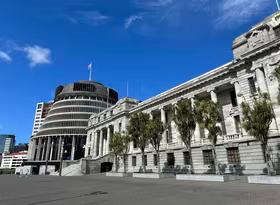Bad policy is widespread
A couple of months ago I read in the Dominion Post that Wellington City Council is proposing to reduce the city’s standard speed limit from 50 km/hr to 40 km/hr. The usual justification is proposed: it will save lives and reduce injuries. Excellent. Let’s make it 5 km/hr and deliver further savings.
Travel is fundamentally about moving people and goods between locations. Most of the time people and businesses wish to do this at least possible cost. The trouble is cost has a number of dimensions. Most obviously we want to reduce the time taken and the direct out-of-pocket cost. Unfortunately, it is not always possible to reduce all costs simultaneously. For example, reductions in travel time might only be possible at the cost of more accidents. Conversely, reducing the speed limit can come at the cost of higher travel time. This is where the Council needs to demonstrate a case for its proposal.
If peak time traffic is already travelling at 40 km/hr or less most of the time, lowering the speed limit to 40 km/hr is superfluous. At other times a lower speed limit could generate considerable travel delays and exacerbate congestion. Perhaps the Council could consider speed limits that vary by time of day, such as have been implemented in parts of Australia outside schools.
If the objective of the proposal is to improve road safety, there may be better ways to achieve it. For example, if most of the more serious accidents are at intersections, red light cameras could be a much more efficient intervention. If the main problem is vehicles crossing the centreline, what about investigating rumble strips?
The Dominion Post reported one councillor as saying that he did not know what the change to 40 km/hr would cost, but that it would be made up by a reduction in injuries, deaths and ACC claims. That’s just the sort of empirically vacuous argument that can lead to bad policy. Whatever the final decision, let’s see a clear statement of the problem first, followed by some rigorous cost-benefit analysis of all the options that could alleviate the problem.
Promotion of ill-designed policy is not the preserve of local government. The Labour party is promoting the removal of GST on fresh fruit and vegetables. But what is the objective – to improve the standard of living of poorer families, to encourage healthier eating, or to be seen to be doing something – anything to attract votes? Even if fruit and vegetable prices do fall by 100% of the GST (which is very doubtful) wouldn’t it be better to assist poorer households by lowering income tax or raising benefit payments? That would give households more choice in their purchasing behaviour.
If the aim is to encourage healthier eating, what about looking at public education programmes or providing a subsidy for school lunches? I don’t know what the best answer is, but I can’t even begin to identify it if I don’t know what the problem is.
Lest I be accused of political bias, consider national standards in education. Presumably the objective here is to raise the standard of education of school leavers, especially with regard to numeracy and literacy. Now there is nothing inherently wrong in having national educational standards, especially at senior levels. That is not the issue. Rather if we wish to improve numeracy and literacy capability, we should be looking at which policies deliver those outcomes most efficiently. If national standards are a step to achieving that outcome then unfortunately the current system is well wide of the mark: the standards are not actually national, nor are they properly moderated between schools. The wider question though is whether the implementation of (proper) national standards constitutes the most efficient way of improving numeracy and literacy levels when measured in terms of the required inputs of taxpayer dollars and the time of school boards and teachers. There is a huge amount of literature on effective schools and effective teaching, highlighting techniques such as ongoing feedback, reciprocal teaching and self-questioning. As with GST and road safety, let ‘shave a clear statement of the problem and then consider how best to resolve it.
My final example is the Rugby World Cup. Central and local governments have injected large amounts of taxpayer and ratepayer dollars to help finance an event that generates substantial income for the IRB. The contribution from central government is estimated to be at least $300m. Two questions should be asked. Firstly, does the RWC deserve assistance – the same question we would ask about assistance to the film industry, green technology development, public transport and so on? And secondly, if the answer to the first question is yes, how could that assistance best be delivered? Income guarantees to the IRB may lower their incentive to sell tickets. What was the objective – to maximise the number of spectators at games, to secure a minimum level of profit for the organisers, or to improve the mood of the nation? Again a much clearer statement of the objectives is required followed by dispassionate analysis of the options available to meet the objective.




